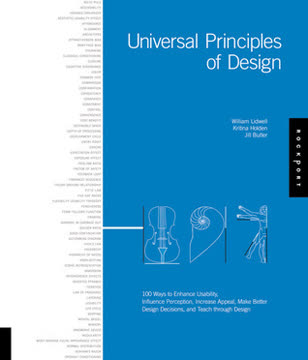Searching...
Top 10 Books on Ergonomics and User-Centric Design
Discover the 10 best books on ergonomics and user experience design that will transform your understanding of human-centered systems and productivity.
Book Summaries
The Art of Stress-Free Productivity
Allen's GTD methodology is a cornerstone for productivity enthusiasts, offering practical strategies that align well with ergonomic principles for managing tasks efficiently.
3 Key Takeaways:
- Capture all tasks and ideas in a trusted system
- Clarify and organize incoming information
- Engage in regular reviews to stay on top of commitments
Choosing a Focused Life in a Noisy World
Newport's exploration of digital minimalism is essential for understanding how to create ergonomic digital environments that promote focus and well-being.
3 Key Takeaways:
- Digital minimalism: Use technology intentionally to support your values
- The attention economy exploits psychological vulnerabilities
- Solitude deprivation harms mental health and well-being
A must-read for anyone interested in design, Norman's book delves into the principles of user-centered design, making it essential for understanding ergonomics in everyday objects.
3 Key Takeaways:
- Design impacts everyday life: Make the invisible visible
- Bridge the gulfs of execution and evaluation
- Use constraints and affordances to guide user actions
A Common Sense Approach to Web Usability
Krug's classic guide to web usability is essential for understanding how to create intuitive user experiences, making it a key resource for ergonomics in digital design.
3 Key Takeaways:
- Don't Make Users Think: Design for Intuition and Clarity
- Web Users Scan, Don't Read: Optimize for Quick Comprehension
- Create Clear Visual Hierarchies and Conventions
Maeda's exploration of simplicity in design is crucial for anyone looking to enhance user experience and ergonomics, emphasizing the importance of clarity and functionality.
3 Key Takeaways:
- Simplicity is achieved through thoughtful reduction
- Organization creates order from chaos
- Time savings equate to simplicity
Lidwell's comprehensive guide to design principles is a must-read for anyone interested in ergonomics, offering insights that apply across various design disciplines.
3 Key Takeaways:
- Design Principles: Universal Laws for Effective Creation
- Perception and Psychology: Shaping User Experience
- Cognitive Load and Information Processing
Simple Guide to Understanding User Interface Design Guidelines
Johnson's book bridges cognitive psychology and UI design, making it essential for understanding how to create user-friendly interfaces that enhance ergonomics.
3 Key Takeaways:
- Our perception is biased by experience, context, and goals
- Vision is optimized for structure and contrast, not absolute brightness
- Peripheral vision is poor but serves important functions
Mark's research on attention spans in the digital age provides valuable insights for ergonomics, helping designers create environments that enhance focus and productivity.
3 Key Takeaways:
- Our attention spans have significantly shortened in the digital age
- Multitasking and interruptions lead to stress and decreased productivity
- The internet's structure and algorithms are designed to capture our attention
Using Psychology to Design Better Products & Services
Yablonski's book combines psychology and design principles, providing valuable insights into user experience that are crucial for effective ergonomic design.
3 Key Takeaways:
- Users transfer expectations from familiar sites to new ones
- Leverage existing mental models for superior user experiences
- Minimize discord when making changes to familiar interfaces
New Directions for Designing Interactive Systems
Raskin's pioneering work on interface design emphasizes the importance of usability and cognitive science, making it a vital resource for anyone interested in ergonomics and user experience.
3 Key Takeaways:
- Modes are the root of many interface problems and should be eliminated
- Visibility is crucial: Make interface elements and their functions clearly apparent
- Habituation is powerful: Design interfaces that allow beneficial habits to form













